
Image of the store’s interior – Herald Photo
“Men refined the cotton seed and produce shortenings, cooking oils, paints, and cattle feeds….” Pettus
The RH Herald reported on Jan. 26, 1888 – “A meeting was held at the Roddey Store to discuss the creation of a new cotton factory in Rock Hill. The leaders of this movement are W.J. Roddey, John R. London, and D. Hutchison. The group voted to issue capital stock of at least $100,000. In addition to these men W.B. Wilson, Jr., and T.A. Crawford are also involved.” On Feb. 9 the paper continued – “The group voted to name the new mill the Standard Cotton Mills of Rock Hill and they have applied for a state charter. The corporators are: those listed as well as W.M. Frew, R.T. Fewell, Arnold Friedheim, A.E. Smith, and A.H. White.”
On March 1st 1888 the Herald reported – “On a meeting of stock holders of the proposed Standard Cotton Mill. Rev. J.S. White was selected chair of the meeting and D. Hutchison as Secretary. The group elected J.R. London as Pres., Sec. and Treas., and a board was established including; W.L. Roddey, J.R. London, A.E. Smith, W.J. Roddey, W.J. Rawlinson, A. Friedheim, W.M. Frew, R.T. Fewell, and T.A. Crawford.” On March 15th the Herald reported – “There is a committee of the Standard Mills looking for a site for the new factory. They are considering the White Lands north of town, known as the baseball grounds and the lands formerly owned by J.M. Ivey near his late residence and the land of A.R. Smith, east of Rock Hill.”
The Herald reported on April 24th 1888 – “The Standard Cotton Mills has decided to build their factory on the A.R. Smith Lands east of Rock Hill just beyond the Kimbrell place. This is a tract of 27 acres. The contract has been let to Mr. W.G. Adams for erection of the factory. The main building will be three stories and will measure 220 ft by 72 feet. They will also build a dye house, a picker room, a boiler house, and an engine house all included in Mr. Adam’s contract. They will also erect about 30 houses for operatives but the contract for the houses has not yet been let.”
Later on May 3rd, 1888 the paper reported – “The first kiln of brick for the Standard cotton mills was fired last Monday. Mr. A.D. Holler has the contract for making the brick. The mill will need 1.5 million brick and Mr. Holler is also making some at his brick yard.” The paper also reported on May 24th – “The brick machine of Mr. A.D. Holler burst last week and in consequence the making of brick for the new factory will be somewhat delayed.”

Courtesy of the WU Pettus Archives – 2024
On June 7th 1888 the paper also reported – “Brick laying commenced on the new factory last Friday. The President of the factory has given the contract for a two story dwelling opposites the factory site.” Later on July 19th the paper reported – “The brickwork on the new factory is about half done. Work on the picker room was begun last Monday. On the 26th the paper also reported – “The looms have been purchased for the Standard Cotton Mills from the Crompton Loom Works of Worcester, Mass.”
The Yorkville Enquirer reported on July 25, 1888 – “Work is rapidly progressing on the Standard Cotton Mill. Brickwork is nearly completed on the main building and most of the machinery has been purchased.”
The Rock Hill Herald reported on Oct. 4, 1888 – “The flooring has been installed in the Standard Mills building. The engine and boiler are expected in a few days and the looms will be shipped this month. Ten houses for operatives are under construction.” Later, on Oct. 25 the paper reported – “The engine for the Standard Mill has arrived and is from the Frick Manufacturing Company and is rated at 150 house power.” Later on Dec. 13 the paper reported – “Operations should begin at the mill in Jan. Fifty looms are in place and another 180 looms should arrive soon. The big smoke stack was raised last week.”
The Yorkville Enquirer reported on Jan. 23, 1889 – “The electric light machinery and fixtures for the plant of the Standard Cotton Mill has been received and will be place in position this week.”
City Directories and History: 1908 – Highland Park Manf. Oil Mill (834 East White), W.H. Cowen Supt.
The second textile mill in Rock Hill was the Standard Cotton Mill. It was initiated by two leading Rock Hill businessmen, John R. London and William Joseph Roddey. Mr. London was largely responsible for the operation of the mill, while Joe Roddey (son of Capt. W. L. Roddey) developed the creative financing plan at the age of 23. To make it easy for local resident to invest, shares were sold on time for payments of fifty cents a week. Even school children pooled their money and bought shares. In 1887, stock sales were completed and construction began in 1888. The mill was completed in February 1889 with Captain A. D. Holler as the contractor. *** Others sources credit the mill to contractor, W.G. Adams of Rock Hill who often worked with Mr. Holler. The mill, with an initial 225 looms, was a success, and the small investors soon were earning a return of ten percent a year on their money. Expansions occurred in 1891 and 1893,

Images courtesy of the Gettys Collection.
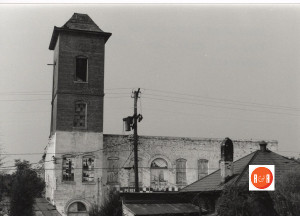 when the mill reached 486 looms. The products of the mill were gingham goods, shirting, and towels. The mill was located near East White Street along the newly completed “Three C’s” Railroad. The contractor for the mill was Captain A. D. Holler.
when the mill reached 486 looms. The products of the mill were gingham goods, shirting, and towels. The mill was located near East White Street along the newly completed “Three C’s” Railroad. The contractor for the mill was Captain A. D. Holler.
The initial board of directors of the Standard Mill included John R. London, President, P. C. Poag, A. Friedheim, T. A. Crawford, J. B. Johnson, W. J. Roddey, W. J. Rawlinson, R. T. Fewell, and A. E. Smith. After the death of Mr. Poag, Capt. W. L. Roddey became a board member.
The Herald reported on Jan. 10, 1889 – “the Standard Cotton Mill will commence dying operations next Monday and ten days later they expect weaving to begin. They expect a shipment of fifty looms today.”
The YV Enquirer reported on Feb. 278, 1889 – “The stockholders of the Standard Cotton Mill met and voted to increase the number of looms from 200 to 450. Also in the paper – “The Presbyterian congregation of Rock Hill will erect a chapel at the Standard Cotton Mill as a house of worship for the operatives.”
The Yorkville Enquirer of Feb. 25, 1891 reported, “The stockholders of the Standard Mills held their meeting> John R. London was re-elected President and W.M. Frew, Sect and Treasurer.”
The YV Enquirer reported on Jan. 25, 1893 – “Major John R. London, Pres. of the Standard Cotton Mill recently celebrated his 60th Birthday. Operatives at the mill represented by A.S. Hand, a weaver, presented him with an ebony cane with a hold head engraved, John R. London from the employees of the Standard Cotton Mill., Jan 20, 1893.”
The YV Enquirer reported on Oct. 11 and Nov. 1, 1893 – “Rock Hill is experiencing an economic depression due to the cotton market. The Standard Mill has cut wages by 20%. The Rock Hill Cotton Factory has only run 1/3 of the time for the last three months, and there is no expectation of immediate improvement. If it does not operate more regularly, a number of employees will need to leave.”
On Sept. 27, 1895 the YV Enquirer reported – “The Standard Cotton Mill has contracted with the RH Machine Works for construction of artesian wells on their property in the suburbs of Rock Hill.”
The Herald reported on Feb. 5, 1896 – “That at the mill, W. F. Johnson’s daughter had two of her fingers badly broken and mashed in the gearing of a of quiller frame on Saturday Jan. 18th. She is getting along nicely, although she suffers a great deal with her wounds.”
The Herald reported on Feb. 5, 1896 – “It is likely that when the Lancaster Mill gets in operation, a good many who came from the eastern part of the state to work at a the Standard Mill will move to Lancaster.”
The Herald reported on Oct. 24, 1896 – “A number of factory operatives who left Rock Hill for Camden in the spring are now returning to the Standard Mill. The Camden Mill is forced to shut down about half the time because of low water levels.”
The Herald reported on Jan. 14, 1899 – “The Highland Park Manufacturing Co. of Charlotte has announced that they will erect a spinning mill with a capacity of 7,000 spindles next to the weaving mill, the old Stand Mill of this city.”
The Herald reported on Jan. 31, 1899 – “The Highland Park village has 126 families and 626 residences.”
The RH Herald reported on Aug. 2, 1899 – “The addition to the Highland Park Mill is progressing. The building will be three stories tall, and 80 ft wide and 210 ft long. This will make the full length of the buildings 420 feet. They are now erecting sixteen new tenement houses and more houses will be built. Ten of these new houses have four rooms and six have six room. The mill currently employs 191 but will expand to about 400 employees.”
Bill for Cotton Seed Meal from the Highland Park Manuf. Co., to Dr. W.W. Fennell, ca. 1926 – Courtesy of the Fennell Collection, 2021
The Rock Hill Herald reported on Nov. 8, 1899 – “Mr. John Mallard has opened a market at the Highland Park Mill.”
Rock Hill Herald, February 20, 1901
A fire did great damage at the Highland Park Mill Village. The store of Mr. W. A. Smith caught fire, and the flames went through the roof. Strong winds took the flames and the cottage occupied by the William Hovis family was aflame. The mill firemen and the city firemen arrived and began fighting the fire. The mill village was evacuated. Mr. Smith’s store was destroyed. It was a two-story frame building owned by the Highland Park Mill and valued at $800. The stock of goods belonging to Mr. Smith was valued at $4,000. The fire soon spread and consumed twelve cottages in the mill village. Most families lost all possessions, and few had insurance. Occupants of the burned cottages were: William Howe, Charlie Moore, Lee Rogers, Tom Better, J. W. Deas, J. N. Morris, Mrs. Wint, J. B. Patterson, Max Hood, Tom Threatt, Mrs. Faulkenberry, Henry Goins, J. O. Roberts, O. H. Wilkerson, Mrs. McElwee, Mr. Rogers, J. R. Collins, Mrs. Mary Deas, and F. B. Rollins. [There are nineteen families listed in the twelve cottages, indicating that many were duplexes]. The mill has twelve new cottages almost complete, and some of the families will move into these.Rock Hill Herald, March 2, 1901 – Mr. A. W. Smith, whose store was burned in the recent fire at the Highland Park, has received an insurance settlement and the storehouse will be rebuilt.
The Herald of June 12, 1901 reported, “The Highland Park mill has completed 18 four room cottages to take the place of the 13 that burned several months ago. Each house is painted a different color.”
The Herald reported on Nov. 8, 1902 – “Pink Blake, colored had the end of the first finger on his right hand mashed while trying to work with the conveyor cups at the Highland Park Mill. Amputation of the finger was necessary.”
The Herald reported on March 5, 1902 – “Otis Wilkinson, a loom fixer at the Highland Park Mill, sustained a painful injury to three fingers on his right hand. Dr. Crawford dressed it and is trying to save his fingers.”
The Herald recorded on Dec. 20, 1902 – “E.H. Hudson, who is working for the R.D. Cole Manf. Co., of Newnan, Ga., has just finished erecting a steel tank in the tower over the Highland Park Oil Mill. This tank which is 12-12 ft., will be filled with water to be used in case of a fire.”
On Jan. 28, 1903 the Herald reported, “A Mr. Farrel an employee of the Highland Park Mill while at work in the dye house yesterday was very seriously scalded when a big dye tub boiled over. Dr. Crawford was called and rendered all the relief possible.”
On Feb. 7, 1903 the Herald further reported – “Mr. H.H. Hood had the misfortune to have his left arm caught in the saws of a gin at the Highland Park Mill. Dr. Fennell decided that amputation was necessary, the arm being taken of between the elbow and shoulder.”
The Herald reported on April 15, 1903 – “Mr. North Howard has leased the company storeroom at the Highland Park Mill and will carry a stock of groceries and drygoods.”
The Rock Hill Record reported on June 29, 1908 – “Manager E.H. Johnston of the Highland Park Mill says that on July 4th there will be a free picnic in Charlotte at the Electric Park, for employees of all the mill employees.” On July 9, it was reported that more than 300 people from Rock Hill went to the big Highland Park picnic in Charlotte. The Company operates mills in Charlotte, Rock Hill and Huntersville.”
The mill had an extensive mill village surrounding the structure. By 1903, there were over 100 families living in the village with about 400 workers. Houses were located on the following streets: High Street, Highland Street, North Jones, Lucas Street (now Hasty Street), Lyle Street, Steele Street, and Kimbrell Street. The mill village surrounding the Highland Park Mill included chapels built by the Presbyterians (1890), Baptists (1909), and Methodists (1916). The mill provided a building for a school in the early years.
The Yorkville Enquirer reported on Jan. 12, 1898 – Mr. John R. London has been appointed receiver of the Standard Cotton Mill of Rock Hill in order to reorganize the company. P.C. Poag is temporary receiver and is to turn over all assets and property to Mr. London.
In 1898, the Standard Mill was sold to a Charlotte firm and was renamed the Highland Park Manufacturing Company #2. Goods were sent to the Highland Park Mill #1 in Charlotte to be finished. The new owners built a large addition to the mill of 430 feet by 80 feet. At this point, the Highland Park Mill was the largest textile operation in Rock Hill. In 1902, a large Cotton Oil Mill and office complex were built nearby on East White Street. The oil mill, later used as a feed and seed store, was demolished in the 1990s.
The Highland Park Mill has been adapted for use as a senior housing facility. It is listed in the National Register of Historic Places.
The Herald reported on September 7, 1895 that the Standard Mill is producing fancy goods and will have a display at the Atlanta Exposition.
Contribution and

Layout of the Cornwell Company’s Rock Hill Feed and Seed Company. Sanborn Insurance Map 1926 – 1959, courtesy of the Galloway Map Collection.
written by Paul M. Gettys (Paul Gettys, nomination to the National Register of Historic Places, “Highland Park Manufacturing Plant and Cotton Oil Complex,” 1990.)
The Herald reported on March 22, 1902 – “The Highland Park Mill Co., has bought four and a half acres embracing the old canning factory site, to build a cotton oil mill. They have let the contract to Mr. R.A. Brown (Broom) of Concord, N.C. who also built the addition to the mill. The cotton oil mill will have a capacity of 50 tons of seed per day. They will establish a ginnery and hope to have both in operation for the next cotton crop. Mr. F.H. Johnson is the mill secretary. They may also build a fertilizer plant.”
The Herald reported on April 6, 1902 – “A machine for the manufacture of brick to be used in the erection of the cottonseed oil mill has installed on the grounds of the Highland Park Mill and the work of making brick is in progress.”
The Herald reported on June 11, 1902 – “That a game of ball was played Saturday afternoon between the Manchester and Highland Park teams at the Highland Park diamond. The result was a score of 24 to 6 in favor of Manchester.”
The Herald reported Aug., 30, 1902 – “The main building and seed house are completed, and the hull and meal house — roof remains to be replaced. The main building is 40 – 147 ft, two stories / brick, the seed house built of wood 64 – 160 ft., the hull and meal house is 48 – 96 ft., the ginnery will be located in the upper story of the main building. A 200 hp, Corless engine is in place and one boiler is completed with another boiler to arrive soon. Mr. M.C. Wood of Statesville, has arrived and will operate the mill. It will have a daily capacity of 20 tons of seed and can produce 1,600 gallons of oil in 24 hours. The plant will have a dozen operatives.”
The Herald reported on Oct. 8, 1902 – “An addition of 1,400 spindles is being placed in the Highland Park Mill. The work is being installed by W.H. Hovis.”
The Herald reported on Nov. 12, 1902 – “The Highland Park Cotton Seed Oil Mill is now running at full capacity of 40 tons per day, the yield of oil being about 40 gallons per ton. The only product to date is crude cotton oil, but next year machinery will be added which can refine it into by products, such as cottolnene and others. The ginnery operation in connection with the oil mill is running well, and turns out clean cotton. It has three, sixty – saw Eagle Gins, and turns out 40 bales a day.”
The Herald reported on Nov. 15, 1902 -“Mrs. T.L. Johnston of Rock Hill and Mr. C.W. Johnston of Charlotte, along with other N.C. stockholders, will organize a corporation for the manufacture of overalls. The charter will be applied for with a capital stock of $20,000. The company will use the second story of the brick store of the Highland Park Company and power will come from the Highland Park Steam Plant.”
The Herald reported on Dec. 3, 1902 – “On Saturday Jack Thompson an eight year old boy feel through an opening in the 2nd story floor of the Highland Park store building to the floor below, a distance of 16 ft. Dr. Cornwell examined the boy and could find no injuries. “
The RH Record reported on March 25, 1904 – “The store of Howard – Brawley at the Highland Park Mill was entered by thieves by breaking a plate glass window. They took $10.00 of shoes and other goods.
The RH Record reported on May 24, 1904 – “That last Thursday afternoon, a cylinder on the dying machine at the mill exploded. Window glass in the mill was shattered and the explosion was heard throughout the mill and community. No one was hurt. ” Also, reported that D.B. Goines will open a new store in the Highland Park Village this week. He will offer fresh groceries and confectionaries.” The McElwee Store ledger of 1915-16 stated that John R. Goines and wife Mary, hold an account at the McElwee store and live at 12 Goines Street. It is unclear as to their relationship, if any, to D.B. Goines.)
The Rock Hill Record reported on Nov. 25, 1907 – “That R.A. Broom (Brown), contractor in Concord, N.C. has died. He built the Carnegie Library at Winthrop College, a part of the Highland Park Mill building, and possibility other buildings in the city.”
The RH Record reported on March 8, 1909 – “The waste house at the Highland Park Mill caught fire and was destroyed at a loss of about $800.”
The Herald reported on Sept. 3, 1914 – “Teachers at the Highland Park School were: Margaret Biggers, Mary Johnson, and Jessie Hall. At that time there were 97 students enrolled.”
The McElwee Store ledger of 1915 states that Grace Steele who is an employee of the mills lived at 299 Jones, Ave., holds an account at the store.
The Rock Hill Herald on Jan. 17, 1916 reported – “The School Board meet and the enrollment at Highland School was 128 students.”
The Herald reported on Sept. 4, 1925 – “That school enrollment has been announced for the fall term: High School (451), Jr. High School (234), Central School (388), Arcade-Victoria (102), Northside (350), Highland Park (72), Ebenezer Avenue (324), Kindergarten (54), Emmett Scott (420), Boyd Hill (114).”
The Herald reported on April 16, 1942 – “The Highland Park Man. Co., is converting to manufacture good for the US Army. They normally manufacture broad cloth for Arrow Shirts, but will now produce Army shirting. The mill has 370 employees.”
Sources: The Herald, various issues, Lynn Willoughby, The Good Town Does Well, Rock Hill, S. C., 1852-2002, published 2002 by the Rock Hill Sesquicentennial Committee, Douglas Summers Brown, The City Without Cobwebs, A History of Rock Hill, South Carolina, Columbia: University of South Carolina Press, 1953.
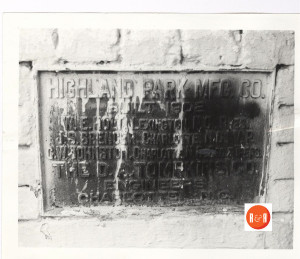
Courtesy of the Jack Tucker photo collection of York County, S.C.
Also see under the More Information link data on several major business contributors to Rock Hill’s success who were also involved in Standard Cotton Mill’s development.
Stay Connected
Explore history, houses, and stories across S.C. Your membership provides you with updates on regional topics, information on historic research, preservation, and monthly feature articles. But remember R&R wants to hear from you and assist in preserving your own family genealogy and memorabilia.
Visit the Southern Queries – Forum to receive assistance in answering questions, discuss genealogy, and enjoy exploring preservation topics with other members. Also listed are several history and genealogical researchers for hire.
User comments welcome — post at the bottom of this page.
The Purina Chow place was run by Charles Sturgis, his brother and his wife. They’re all gone now. My company, through my Dad, did their heating and ac work at the store, plus their home. – Bill Troublefield FB 8.17
Yes! Remember walking to Herbert Walls’ grocery store for Mama, charging on our bill that was paid off on pay day at the mill. All that stuff was a couple blocks of each other. We lived on Hasty Street! A simple time… Sandra Craig Parker FB 8.17
Sure do my family bought coal at the coal store and the Purina store would have a dog dipping day each summer for the fleas and ticks would take our dogs there! – Sarah L. Wallace 8.17
Please enjoy this structure and all those listed in Roots and Recall. But remember each is private property. So view them from a
distance or from a public area such as the sidewalk or public road.
Do you have information to share and preserve? Family, school, church, or other older photos and stories are welcome. Send them digitally through the “Share Your Story” link, so they too might be posted on Roots and Recall.
Thanks!
User comments always welcome - please post at the bottom of this page.

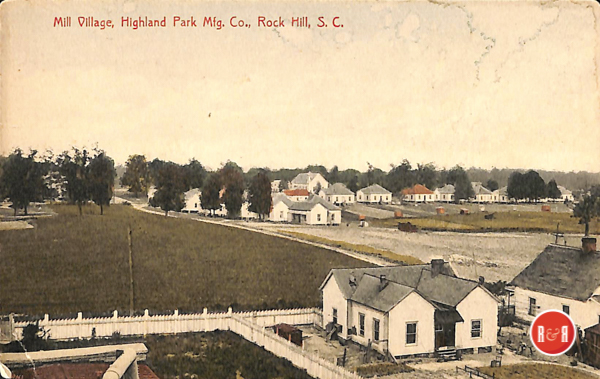


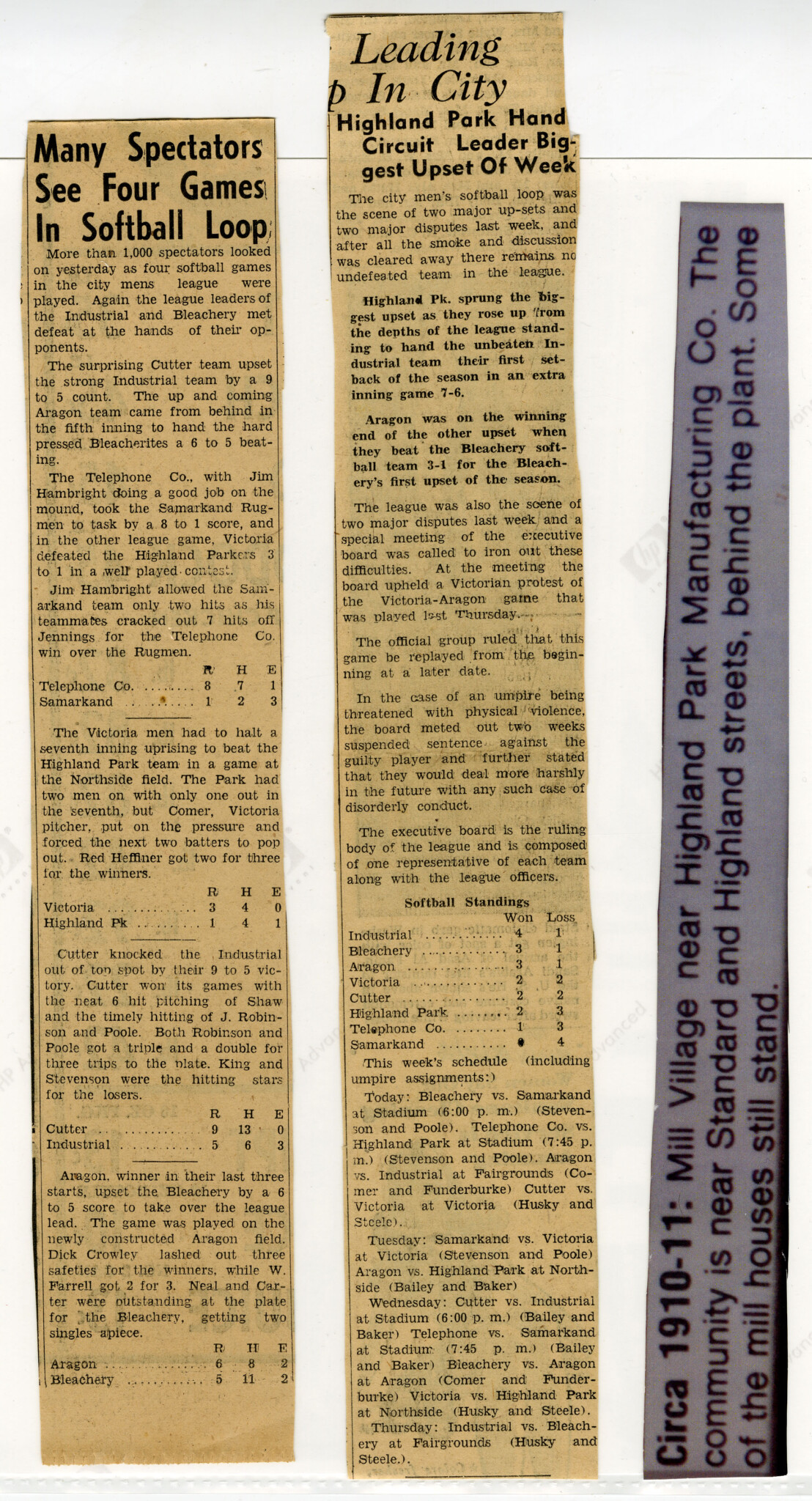
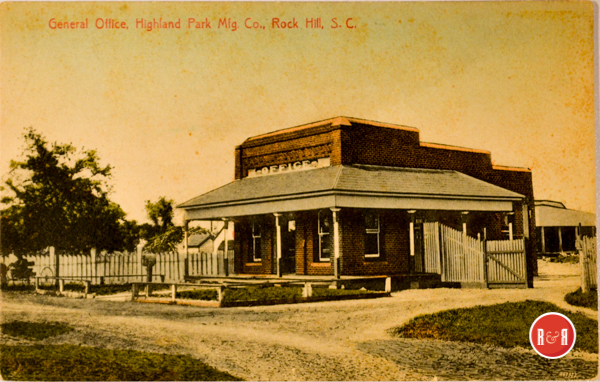

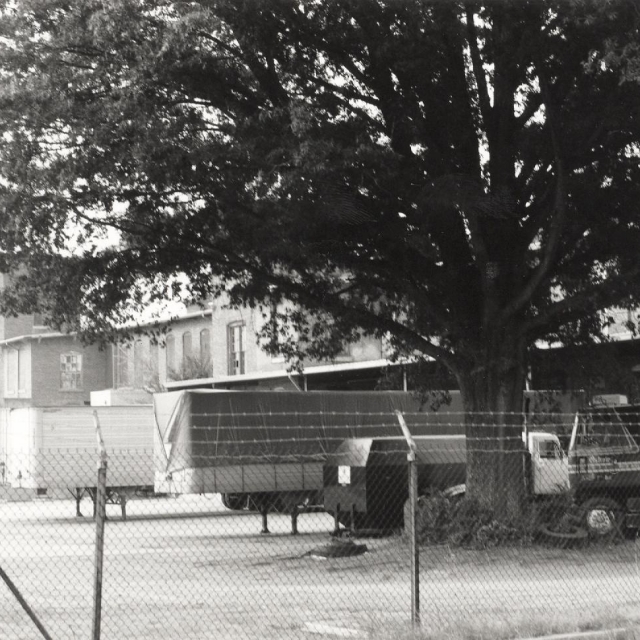
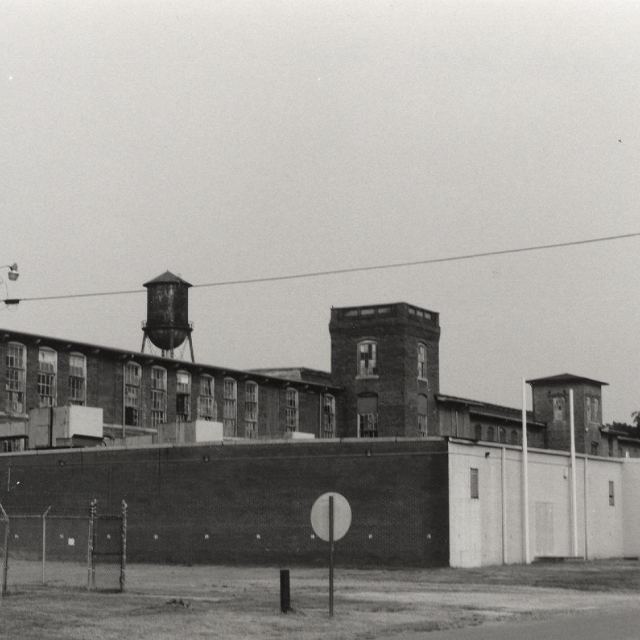





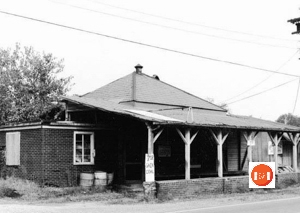
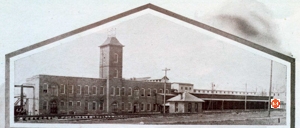














My grandmother went to work at the tender age of 8 years at Highland Park Mfg. She worked in the weave room in Rock Hill and then moved to plant “1” in Charlotte N.C. and remained a faithful employee for 56 years. Not having the privilege of an education was one thing she regretted most in her life. She made sure her children were blessed with a formal education to insure there place in life outside the mill village. She loved her years in the mill as that was all she knew but did not want her children to experience the same life but a better one.
Please provide your grandmother’s full name and in further information. Thanks for sharing on R&R!
Wade@R&R.com
My dad Marvin R. Burris worked at the Highland Park Mill for many years until it was closed. We live in several of the mill houses on Hasty Street, Steele Street, and Lyle Street. My favorite house was on the corner of Steele and Lyle infront of the mill pond we would throw rocks in the mill pond just to see the splash. We had a coal heater in the house and used to buy bags of coal from the RH Feed & Supple Store ran by the Sturgis family. Wonderful childhood memories.